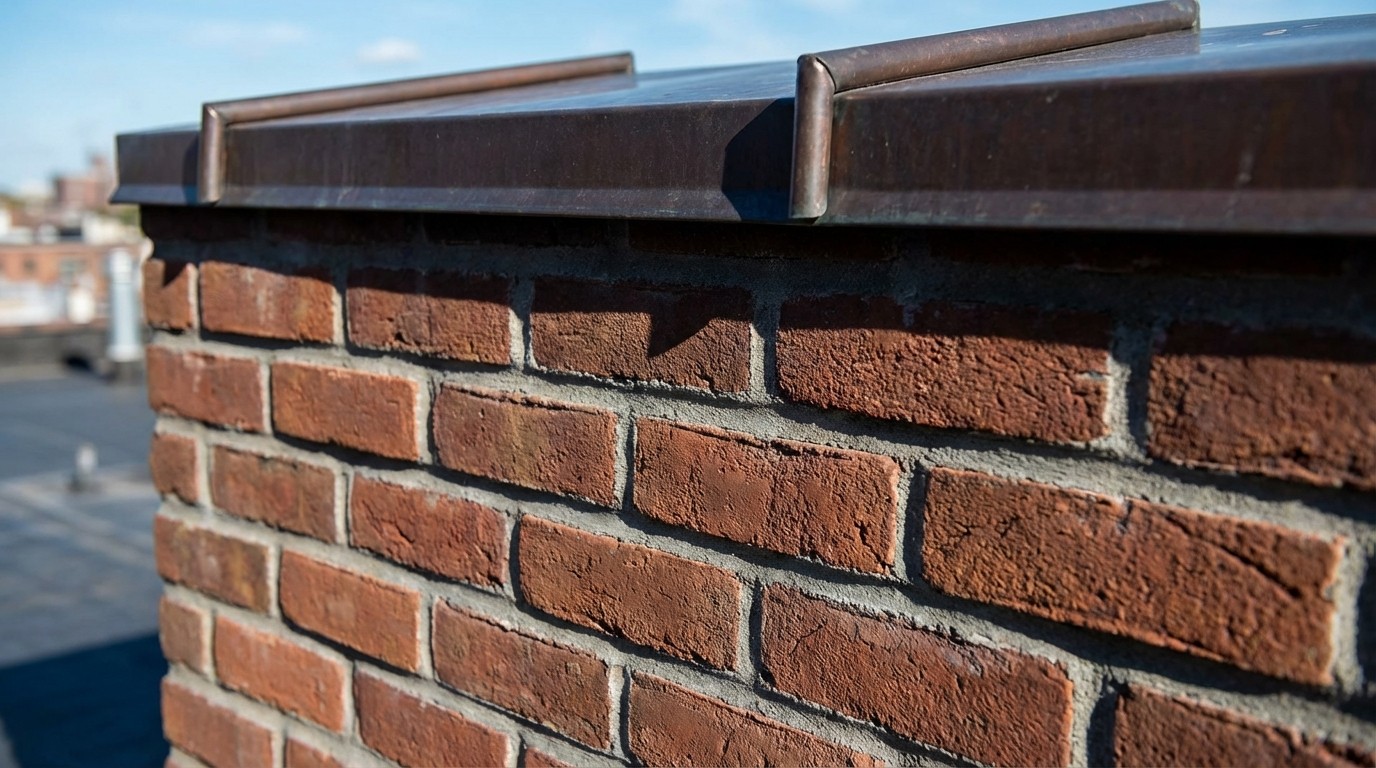Hip roofs have four sloping sides and handle storms better, while gable roofs have two sloping sides with triangular ends.
Hip roofs slope on all four sides, while gable roofs have two slopes with triangular ends. This guide covers how each style performs in wind conditions, their cost differences, and which option makes sense for your specific home and budget.
What Is the Difference Between a Hip Roof and a Gable Roof
A hip roof has four sloping sides that all angle downward to meet the walls, while a gable roof has two sloping sides with flat, triangular wall sections at each end. That triangular section is called a gable, and it's probably the shape you picture when you think of a classic house.
This difference in shape affects almost everything about your roof, from how much it costs to build to how well it handles storms. Hip roofs tend to be more wind-resistant because there's no flat surface for wind to push against. Gable roofs, on the other hand, cost less and give you more attic space.
Here's a quick comparison:
Feature | Hip Roof | Gable Roof |
|---|---|---|
Shape | Four sloping sides | Two sloping sides with triangular ends |
Wind resistance | Better | Lower |
Cost | Higher | Lower |
Attic space | Less | More |
Construction complexity | More complex | Simpler |
So how do you know which one you have? Stand across the street from your house. If you see a triangular wall section rising to a peak at either end, that's a gable roof. If every side of your roof slopes downward without any flat vertical sections, you're looking at a hip roof.
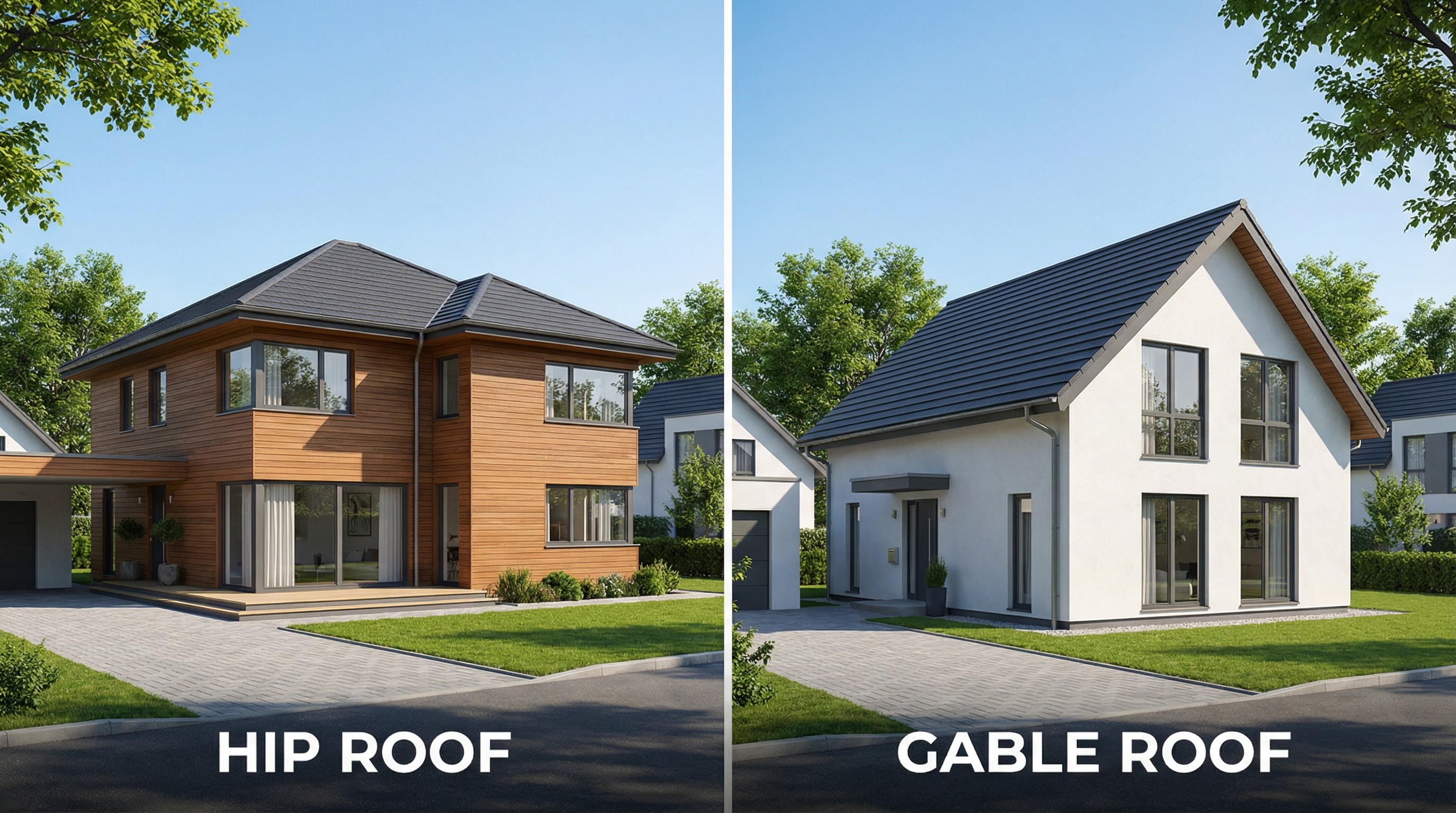
What Is a Hip Roof
A hip roof is named after its "hips," which are the external angles where two sloping roof sections meet. All four sides angle inward toward a central ridge, creating a structure where each slope contributes to the roof's overall stability.
From the curb, hip roofs look balanced and symmetrical. You'll see them often on ranch-style homes, Mediterranean architecture, and newer construction in areas prone to hurricanes or high winds. The design has been popular for centuries because it handles weather well and looks polished from every angle.
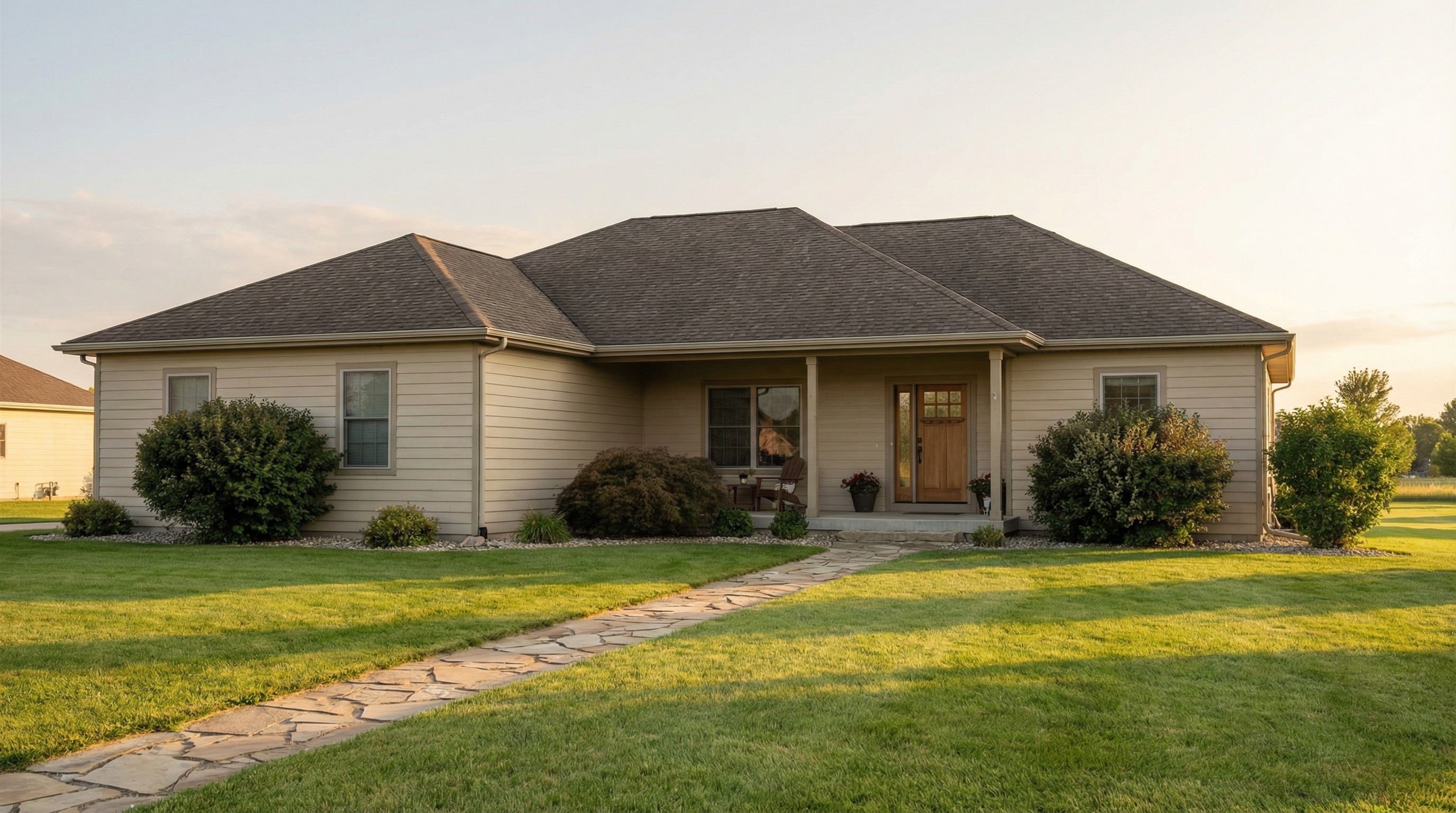
Simple hip roof
The most basic version has four slopes that meet at a single ridge running along the top of the house. This works well on rectangular floor plans and is especially common on single-story ranch homes. If your house is longer than it is wide, a simple hip roof is likely what a builder would recommend.
Cross hipped roof
When two hip roof sections join at a perpendicular angle, you get a cross hipped roof. This creates an L-shaped or T-shaped roofline. Larger homes with wings, additions, or attached garages often have cross hipped roofs because the design follows the floor plan naturally.
Half hipped roof
Also called a jerkinhead, a half hipped roof is a hybrid. It starts as a gable but clips the peak with a small slope. This gives you some of the wind resistance of a hip roof while preserving more attic space than a full hip design would allow.
Pyramid hip roof
Four equal triangular slopes meet at a single point, like a true pyramid. This style works best on square floor plans and is popular for gazebos, pool houses, and smaller structures. You'll occasionally see pyramid hip roofs on main residences, though they're less common.
What Is a Gable Roof
A gable roof is the classic "A-frame" shape. Two sloped sections meet at a central ridge, and the triangular wall sections at each end are the gables. The gable roof represents the classic house shape most people recognize-the traditional A-frame design that's been a staple of American residential architecture.
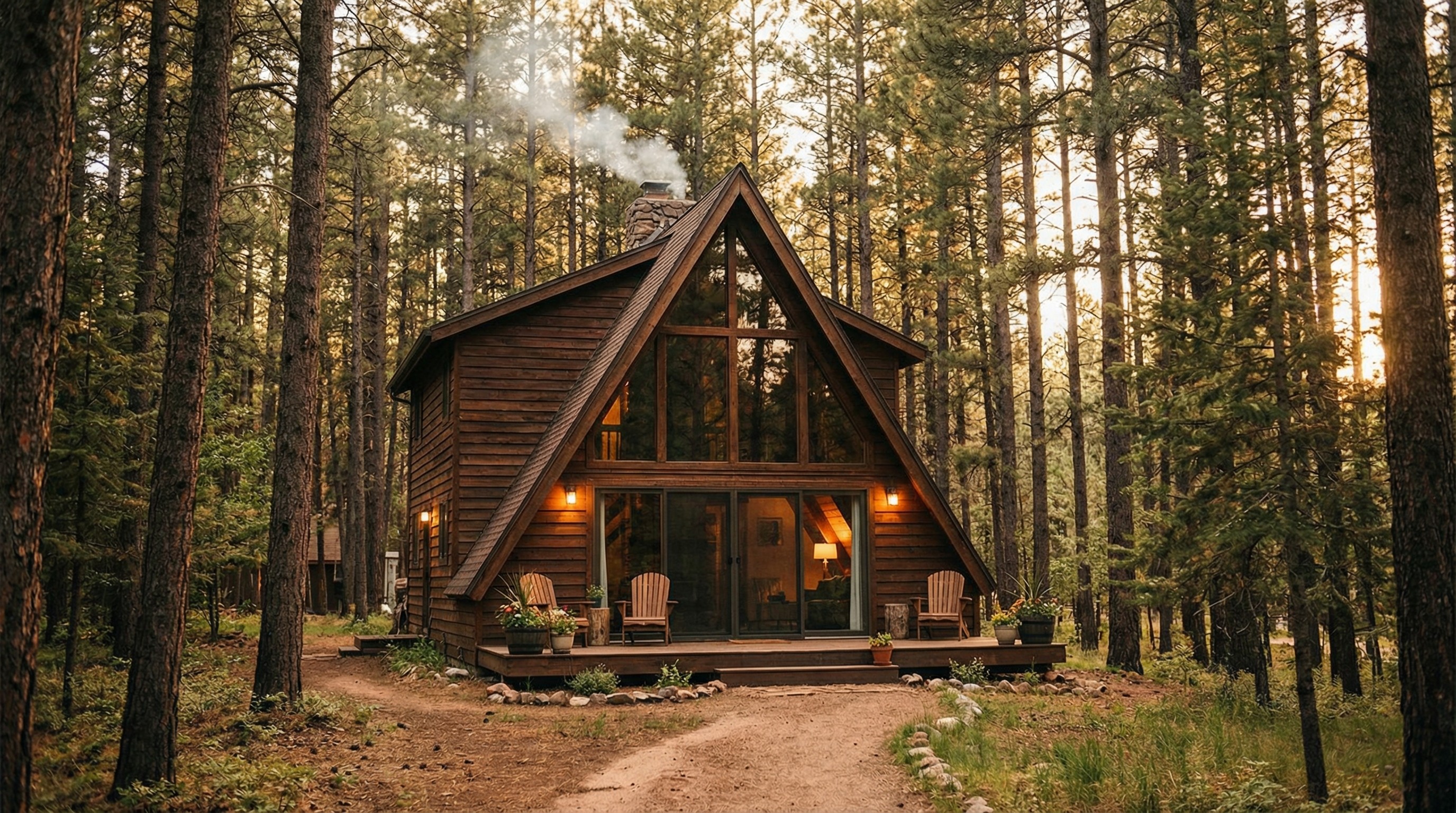
Gable roofs are the most common style in America for practical reasons. They're straightforward to build, they cost less than hip roofs, and they create excellent attic space. The steep slopes also shed rain and snow efficiently, which is why you see them everywhere from New England to the Pacific Northwest.
Front gable roof
With a front gable, the triangular section faces the street. This creates a prominent facade that draws the eye upward. Colonial and Cape Cod style homes often feature front gables, and the design adds architectural interest without much extra cost.
Side gable roof
Here, the gables face the sides of the home while the ridge runs parallel to the street. This is probably the most common residential roof configuration in any neighborhood. It's simple, effective, and works with almost any house style.
Cross gable roof
Two gable sections intersect at right angles, forming an L or T shape. Builders use cross gable roofs for homes with attached garages, wings, or more complex floor plans. Each section has its own ridge, and the valleys where they meet require careful flashing to prevent leaks.
Dutch gable roof
A Dutch gable places a small gable on top of a hip roof, combining both styles into one. The result adds visual interest and improves attic ventilation while keeping some of the hip roof's wind resistance. It's a popular choice for homeowners who want the best of both worlds.
Hip roof vs Gable Roof Key Differences
Beyond the basic shape, hip and gable roofs perform differently in real-world conditions. Let's break down what actually matters when you're choosing between them.
Wind and storm resistance
Hip roofs handle high winds better because all four sides slope inward. There's no flat surface for wind to push against, which reduces the risk of uplift during storms.
Gable ends, by contrast, act like sails. Strong winds can catch that flat triangular section and, in severe cases, peel the roof back or cause structural damage. This is why building codes in hurricane zones often require additional bracing for gable roofs.
For homeowners in areas with frequent thunderstorms or tropical weather, the wind resistance difference between hip and gable roofs can affect both safety and insurance costs.
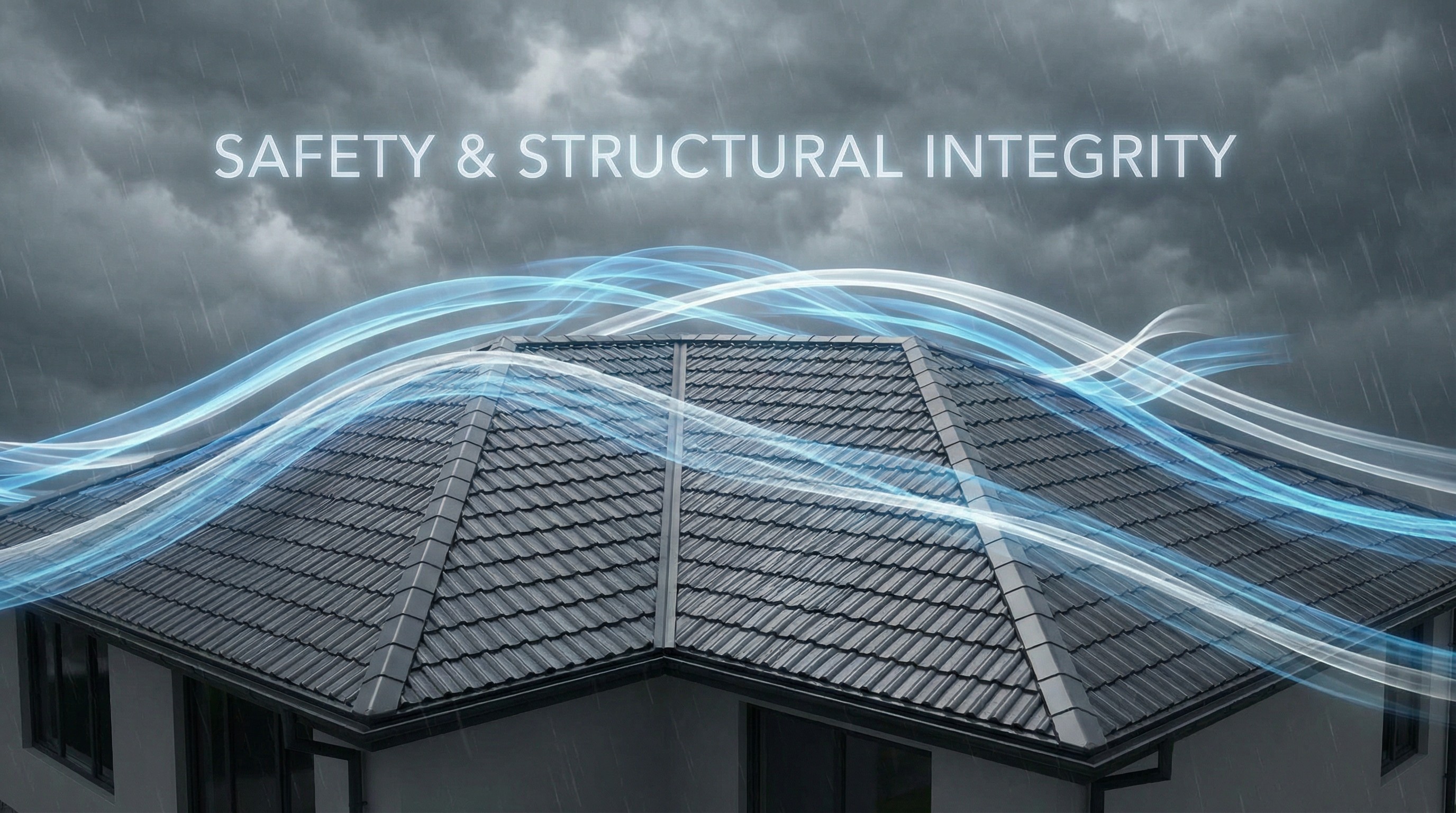
Water drainage and snow load
Both styles shed water effectively, though they handle precipitation differently.
Gable roofs with steeper pitches shed snow quickly because nothing interrupts the slope. Water runs straight down to the gutters.
Hip roofs can accumulate snow in the valleys where slopes meet. In most of the Southeast, this isn't a major concern, but it's worth considering if you live in an area with heavy snowfall.
Attic space and ventilation
Gable roofs win on interior space. The taller peak and vertical end walls create more usable attic square footage, whether you want storage or a future bonus room. Installing gable vents is also simpler and cheaper because you're just cutting into a flat wall section.
Hip roofs have less interior volume because all four sides slope inward. However, they offer consistent eave ventilation around all four sides, which can improve airflow. Either style can be properly ventilated with the right approach.
Curb appeal and architectural style
Your roof shape significantly affects how your home looks from the street.
Hip roofs appear symmetrical and polished. They complement modern, Mediterranean, and contemporary architecture well. Gable roofs feel traditional and classic, fitting naturally with Colonial, Craftsman, and farmhouse styles.
The best choice often depends on what other homes in your neighborhood have. Matching the surrounding architecture typically helps with resale value, though personal preference matters too.
Maintenance and long term repairs
Hip roofs have more seams, ridges, and hips where leaks can potentially develop. Each intersection requires proper flashing and careful installation. Over time, more seams mean more places to inspect and maintain.
Gable roofs are simpler in this regard, but the triangular end walls can take a beating during storms. You might face siding repairs or structural reinforcement on the gable ends after severe weather passes through.
Hip Roof vs Gable Roof Cost Comparison
Hip roofs typically cost more than gable roofs. The reasons are straightforward:
Materials: Hip roofs require more shingles, more flashing, and more ridge cap because of the additional slopes and intersections.
Labor: The complex angles take longer to frame and install correctly. More cuts, more measurements, more time.
Gable advantage: Simpler framing means faster installation and lower labor costs overall.
Hip roofs typically cost 10-20% more than gable roofs. On a $15,000 roof replacement...
How hip and gable roofs affect your insurance
Many insurance companies offer discounts for hip roofs because of their superior wind resistance. In storm-prone areas, this discount can be meaningful.
Gable roofs may carry higher premiums, especially in regions with frequent severe weather. However, reinforcing gable ends with proper bracing can sometimes qualify you for credits that offset the difference.
Before making a final decision on roof style, it's worth calling your insurance agent. Ask specifically about roof shape discounts and what documentation you'd need to qualify. This conversation could influence which style makes the most financial sense for your situation.
Can a Roof Have Both Hips and Gables
Yes, and most homes actually do. Pure hip roofs and pure gable roofs are less common than combinations of both.
If your home has an attached garage, a bump-out, or an L-shaped floor plan, you likely have sections of hip and sections of gable working together. Dutch gables intentionally blend both styles for aesthetic reasons. Cross-hipped designs do the same thing from a structural standpoint.
This isn't an either-or decision for many homeowners. Your roof's shape often follows your floor plan, and a skilled roofer can make any combination look intentional and attractive.
Which Roof Style Is Best for Your Home
The optimal choice depends on your specific priorities and local conditions. As roofing experts, we can help you weigh the key factors-wind resistance, cost, maintenance requirements, and architectural fit-to determine which style serves your home best.
Best for storm and wind protection
Hip roofs are the stronger choice in high-wind areas. If you've experienced storm damage before or live somewhere with frequent severe weather, the added wind resistance may be worth the extra cost.
Best for homeowners on a budget
Gable roofs cost less to build and repair. If budget is your primary concern, a well-built gable roof will serve you reliably for decades.
Best for resale value and curb appeal
Match your neighborhood. A hip roof in a neighborhood of gables, or vice versa, can look out of place. Both styles can be beautiful when they fit the surrounding architecture.
Best for adding solar panels
Gable roofs often provide larger, uninterrupted south-facing sections that are ideal for solar panel installation. Hip roofs have more slopes, but each individual section is smaller, which can complicate panel layout and reduce total capacity.
How to Compare Quotes and Choose the Right Roof
Whether you choose hip or gable, getting multiple quotes is the best way to ensure fair pricing. A good quote breaks out materials, labor, and any extras so you can compare apples to apples.
Look for line-item details rather than single lump-sum prices. This transparency helps you understand exactly what you're paying for and makes it easier to identify fair pricing versus inflated costs or concerning low-ball estimates. Quality platforms provide these detailed breakdowns automatically, removing the guesswork from price comparisons.


